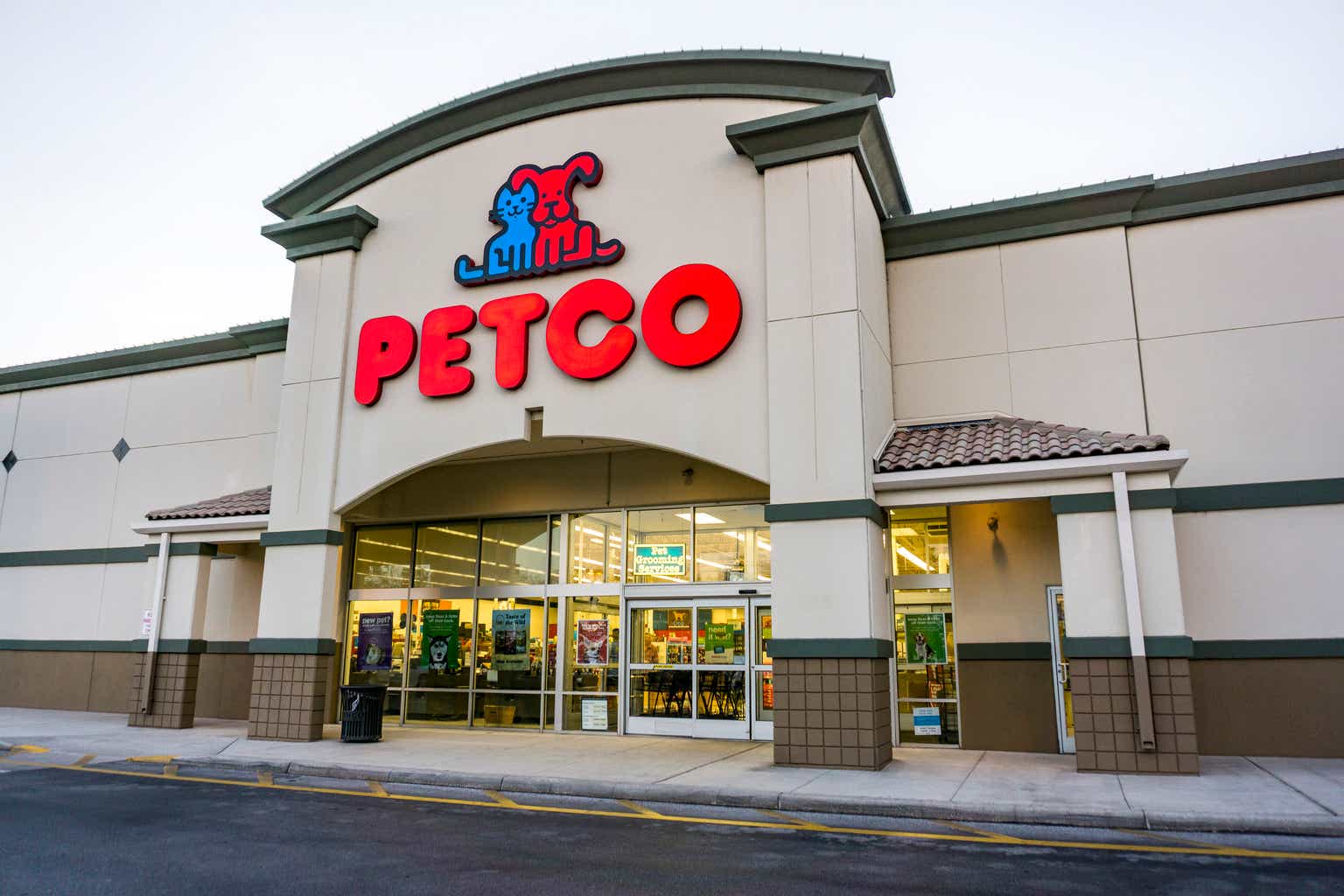In August, I believed that Petco Health and Wellness (NASDAQ:WOOF) has proven to be a real dog, suffering from declines in sales in the post-pandemic world, which hurts the bottom line at a time when debt was really high.
Despite a huge discount in the shares, I feared the leverage overhang and quite frankly the quality of the business, which has prevented me from buying the dip so far.
Right now, investors have to swallow another disappointment, with shares down to the lowest levels amidst real quality concerns. The fact that losses are reported and debt consequently has become a real issue here.
A Huge Boom & Bust Cycle
Petco Health was founded back in the 1960s, delivering a wide range of products and services for animals, catering to a huge market with over 70 million households holding a pet (or even multiple pets), thereby creating a market opportunity which exceeds $100 billion per annum. Most of this market is comprised out of food, but the business has broadened out to care, insurance and other services as well.
The business posted negative comparable sales growth in 2016, 2017 and 2018, with growth seen thereafter, as it really was the pandemic which provided a window of opportunity for private equity owners to bring the business public in 2021.
Pre-pandemic, this was a $4.4 billion business which posted operating profits of $129 million, translating into supermarket-like operating margins. Sales jumped to $4.9 billion in the pandemic year 2020, as EBITDA rose to $484 million.
2021 sales growth was even more pronounced, with sales up to $5.8 billion as EBITDA rose to $591 million, translating into adjusted earnings of $0.91 per share, although this fell down to $0.72 per share if we adjust for stock-based compensation expenses.
2022 sales growth slowed down dramatically, with revenues reported up 4% to $6.4 billion, yet EBITDA fell 1.5% to $582 million, with adjusted earnings down to $0.75 per share, and down further if we strip out the stock-based compensation expense. Net debt was flattish at $1.45 billion, translating into a 2.5 times leverage ratio which looks reasonable but comes amidst adjusted earnings and requirement to invest into the business, as well as slower momentum of course in the business.
2023 sales were seen at a midpoint of $6.21 billion, with earnings seen around $0.58 per share, a dismal outlook, certainly if we realize that this year includes another working week.
Following a 3% increase in second quarter sales to $1.53 billion, it were operating profits which were cut in half (after a similar performance was seen in the first quarter). This made that the business cut the EBITDA guidance to a midpoint to just $470 million, with adjusted earnings seen around $0.27 per share, which results in break-even results after accounting for stock-based compensation expenses. General margin weakness and higher interest rates have been hurting the bottom line, all when shares traded around the $5 mark in August.
While the low price makes it compelling to get involved with the shares, I feared the debt load and quality of the business, leaving little margin for error to execute around its current woes.
All Downhill
A $5 stock in August has gradually fallen to the $3 and change territory in the fall, now trading at $2.70 per share as the stock has seen another +20% dive in response to the release of the third quarter results.
These results revealed a 0.5% decline in sales to $1.49 billion, as comparable sales were flat year-over-year. That was about the good news, as gross profits (in dollar terms) were actually down 8% to $550 million. Stripping out a huge $1.22 billion impairment charge, the company actually reported an operating loss of $10 million (vs. a $48 million profit in the third quarter last year).
That is just part of the bad news, as this comes ahead of a $36 million interest expense for the quarter, an expense which is rapidly growing higher amidst rising interest rates, even as the company has some caps in place.
This made that realistic losses were reported here, as net debt has actually been quite flattish at $1.42 billion, yet the 268 million shares means that the equity valuation of the business has fallen to just half of the nominal net debt load.
With the company still seeing revenues around $6.21 billion, the adjusted EBITDA guidance has been cut to $400 million, with adjusted earnings seen at a paltry eight cents, translating into realistic losses here. This pushed up leverage ratios to about 3.5 times, although the current run rate suggests that leverage might top 4 times here.
The company attributes the softness to a tighter consumer, which is navigating more challenging economic conditions. Trying to offset some of these headwinds, the company targets cost savings of $150 million by the fiscal year 2025, of which $40 million to be realized in year one.
Too Early To Get Upbeat
The reality is that shares have fallen to fresh lows, as the woes are rising, not only impairing earnings power but creating real leverage concerns as well, with no quick avail in sight.
Quite frankly, shares are effectively a long term call option here, but the lack of perceived quality of the business, a lack of profitability and huge (relative) debt load make me very cautious, as quite frankly all options are on the table. Advocates point toward the ecosystem as long term potential and strength, with Petco being strong in care centers as well (which cannot be replicated by e-commerce).
At the same time, it might be the continued rise of e-commerce and specialty players like Chewy (CHWY) which might put much pressure on the core merchandise part of the business, withholding the business from thriving in the future.
Not convinced given the ever continuing headwind, I still find it far too early to get upbeat on the shares, seeing no reason to get involved just yet.
Read the full article here




